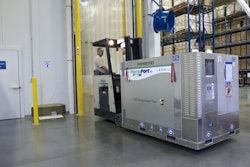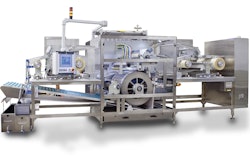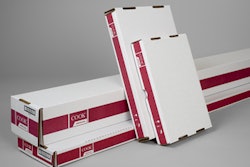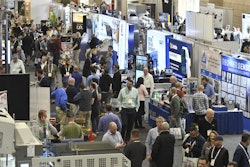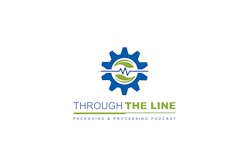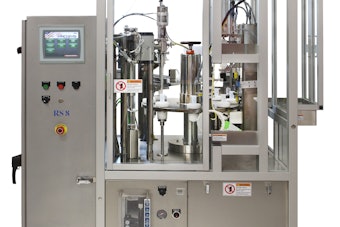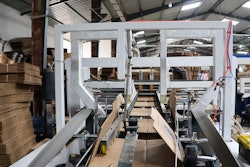HCP: Tell us about Controlled room temperature, or CRT, in the pharmaceutical and biologics market.
Davis: Controlled room temperature is something that has become increasing popular in the temperature-controlled transportation market in the past few years, providing an additional specific temperature-sensitive category for products.
An issue we have with CRT is that most people in the market still see it as ambient or room temperature. Thus, they try to move that product through a very complex supply chain, without properly protecting it. So when they do that they put the product and client (or manufacturer) at risk.
HCP: Isn’t CRT clearly defined and why is it generating so much interest today?
Davis: The biggest challenge that we have in today’s world with CRT is that nobody has truly defined what it is. So we know that it ranges anywhere between 10°C and 30°C, but within that, you have probably four or five variations depending upon whom you ask, because it really is not defined as it’s relatively new to the cold chain market.
Most shippers don’t adequately protect their product. The product is shipped in simple corrugated cases and moved within the small parcel package or freight network without having any type of protection. It is often assumed that room temperature is room temperature, and regardless of how it is transported, it’s going to be safe. That’s really not the case. If we look at one particular range for CRT, it’s 20°C to 25°C. It’s very, very tight. In order to maintain that specific temperature within our network, it must be properly packaged.
So to help clients out with CRT products we conduct a temperature study with them, looking at the complete range—from a freight perspective and from a small package perspective. The study monitors the temperature and shipping conditions, such as weather, within our network. This process allows our customers to take a look at this data and together, we develop packaging solutions or create tailored-packaging that’s designed to protect their product in their particular lanes within our network. So we’re not going to choose packaging for them, but we can give them options on what is appropriate for their product within our network. That’s where UPS Temperature True® Packaging comes in.
HCP: Describe some of the challenges manufacturers may not be aware of in the distribution of their products.
Davis: A challenge not often considered is the number of times a package can be exposed to the outside environment and temperature. For example, during a flight, a package can be exposed at multiple times throughout the transportation cycle. For example, say you are in Chicago in January, the plane is on the tarmac and the doors are open for an extended period of time; it’s very cold outside, and as a result the temperature inside the aircraft is going to also be cold. When those doors close and the aircraft takes off, it’s going to take some time for the temperature within the aircraft to stabilize. Once the plane has arrived, the doors will open and the product must be removed from the aircraft, creating another opportunity for exposure. Tugging is the process used to bring a product to or from an aircraft, and the product will be exposed during that particular period of time as well.
These examples reflect why the right packaging for any product, even a CRT product, is so important.
HCP: So, what recommendations do you have for manufacturers?
Davis: The solution to this is truly to understand what the product is going to be exposed to. Do a study to figure out—from origin to destination—the average temperatures and times that product is going to be exposed.
We can help the client develop validated packaging for their particular product, perhaps with an insulated box with phase-change material or gels that are going to maintain their internal temperature for a certain period of time—say for 72, 96, or 120 hours. Once that’s achieved, the product is protected regardless of the temperatures on the aircraft, or if the product is stuck on the tarmac waiting to be loaded, or if the doors are open on the aircraft. That’s because the packaging is going to protect the product by maintaining necessary temperatures.
From a last-mile perspective, again, the key is going to be packaging. If you are moving product as freight, say a pallet load of product, it is recommended under certain circumstances that a refrigerated or temperature-controlled truck is used for final delivery.
But from a small package perspective, that product has to be protected by its packaging. So the UPS Temperature True® Packaging product is critical to maintaining that product throughout the transportation cycle.
Packaging regulations are coming—they are already in Canada and Europe. Don’t wait for them to come here; get prepared now. Start doing temperature studies on your product and understand what extremes your product could be exposed to in order to best determine the appropriate packaging to protect your product in transit, from start to finish.
HCP: Can you provide an example of a successful shipping process?
Davis: The PharmaPort™ 360 from Cool Containers is an active hybrid container. What that means is that it’s designed to hold one pallet of product, and is set to maintain a temperature range for temperature-sensitive products. A client would lease the containers from UPS, and we would deliver them to the client pre-cooled. They would put their pallet load in there, close it, seal it, and make sure the temperature is set correctly. Then it is transported from origin to destination.
In transit, product temperature is monitored in a couple of ways. The first is via a data logger on the side of the PharmaPort™ 360 container. The datalogger is the official temperature-recording device for the unit. This actually takes a temperature measurement every five minutes. The reason why this is the official temperature monitor is because the data that comes out of the logger is compliant with the FDA’s 21 CFR Part 11, which refers to electronic records and signatures.
The secondary method of recording the temperatures is the GPS GSM device. That takes a measurement every 15 minutes. It transmits that data when it is stationary, every 15 minutes. It is not compliant with 21 CFR Part 11. Thus, it cannot be used in support of an FDA audit.
At UPS, we know how important maintaining a certain temperature is to our customers and their products, so we work with them to develop the best solutions for their product’s journey.



